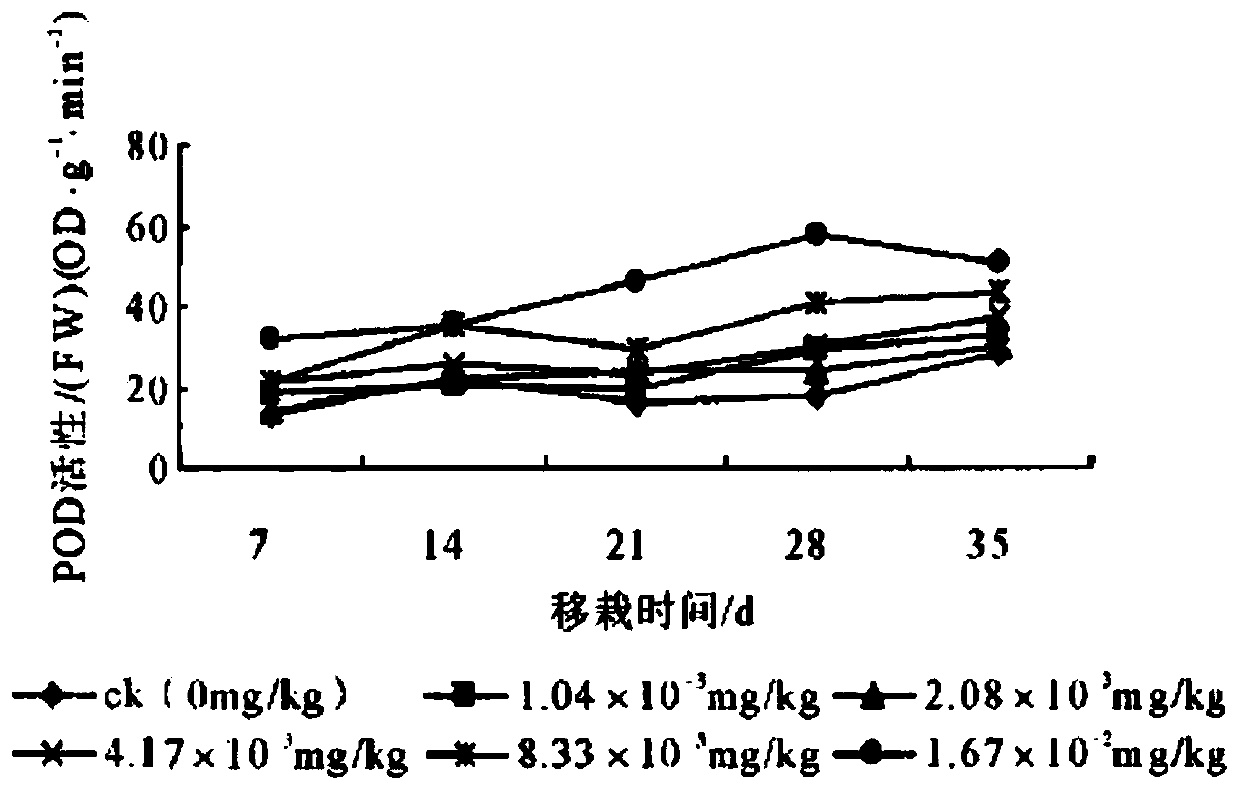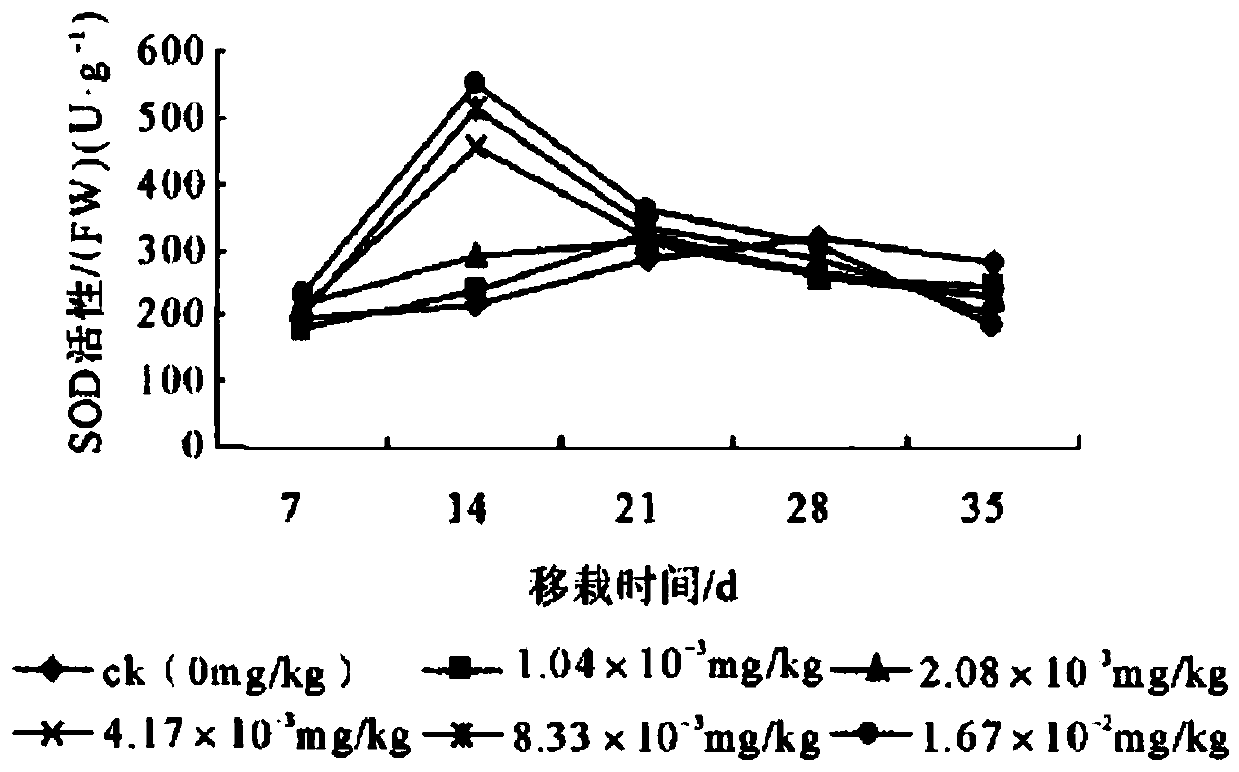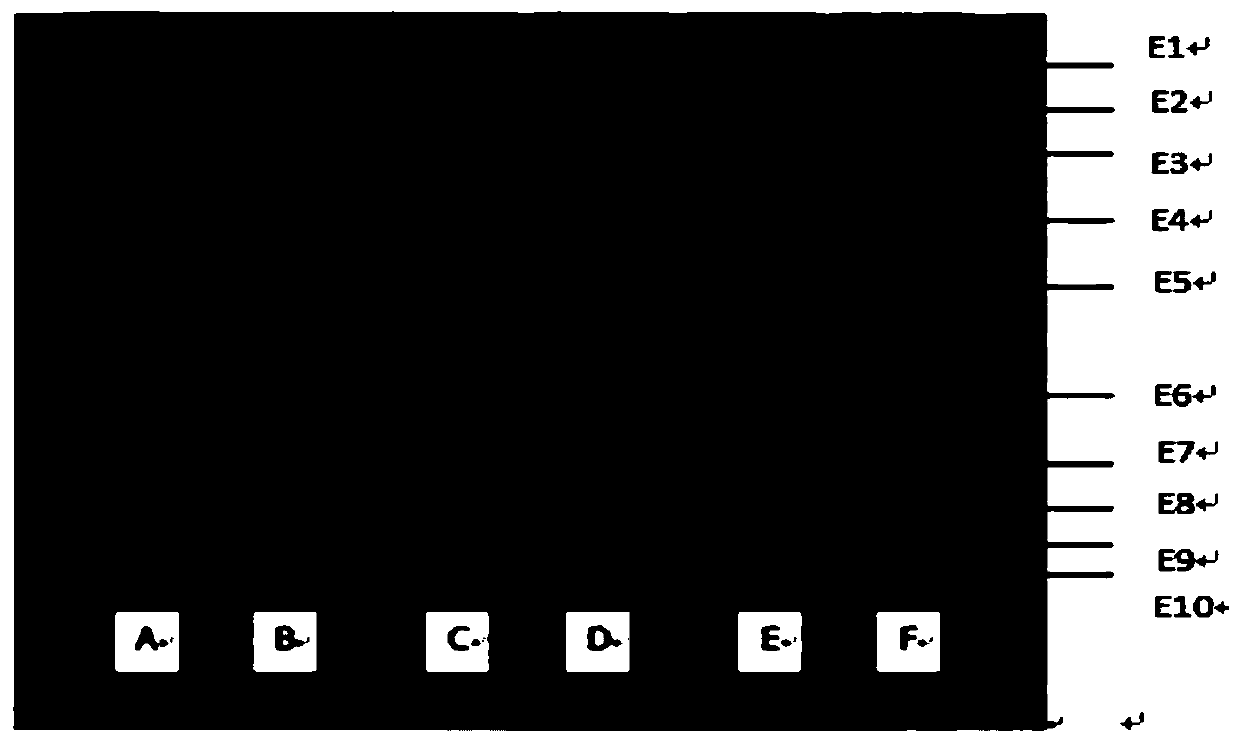A method for comprehensively improving weeding in tobacco fields and disease resistance of tobacco seedlings and reducing teratogenicity
A technology for disease resistance and tobacco seedlings, applied in the field of comprehensively improving the weeding and disease resistance of tobacco fields and reducing teratogenicity, can solve serious problems, alleviate the contradiction of cultivated land, promote the construction of modern tobacco agriculture, and enhance the The effect of anti-disease function
- Summary
- Abstract
- Description
- Claims
- Application Information
AI Technical Summary
Problems solved by technology
Method used
Image
Examples
Embodiment 1
[0022] The degradation dynamics of quinclorac in the test soil and water samples basically follow the first-order kinetic equation, that is: Ct=C 0 e -kt , t 1 / 2 =ln2 / k. Table 1 lists the parameters of the quinclorac residue digestion equation in randomly selected soil samples, and the correlation coefficient r between the residual amount Ct of quinclorac in the sample and the degradation time t is all above 0.87. The half-life of quinclorac in the samples ranged from 48.6d to 66.7d.
[0023] Table 1 The residual degradation results of quinclorac in soil samples
[0024]
Embodiment 2
[0026] 1. Determination of Superoxide Dismutase Activity
[0027] Reagent preparation: 0.05mol L -1 Phosphate buffer (pH7.8); extraction medium: 50mmol L -1 pH7.8 phosphate buffer (containing 1% polyvinylpyrrolidone); 130mmol·L -1 Methionine (Met) solution: Weigh 1.399g Met, dissolve it with phosphate buffer and dilute to 100mL; 750μmol L -1 NBT: Weigh 0.06133g NBT, dissolve it with phosphate buffer solution and dilute to 100mL, and store in the dark;
[0028] 100μmol·L -1 EDTA-Na 2 : Weigh 0.037224g EDTA-Na 2 , constant volume 1000mL; 20μmol L -1 Riboflavin solution: Weigh 0.0075g riboflavin, dilute to 100mL, and store in the dark.
[0029] Preparation of enzyme solution: take the fourth piece of unfolded tobacco leaf, remove the midrib, accurately weigh 0.3g (a total of three parts) in a pre-cooled mortar, add 1.5 mL of pre-cooled extraction medium (add in three times, grind once, washed twice), ground into a homogenate in an ice bath, transferred to a 1.5mL centrifu...
Embodiment 3 2
[0081] Effect on tobacco growth and herbicidal effect experiment after embodiment 3 quinclorac treatment
[0082] 1. Observation of experimental symptoms
[0083] Tobacco growth deformity grading standards are formulated according to the different leaf width inhibition rates: if the leaf width inhibition rate is less than 20%, it means that the agent has basically no teratogenic effect on tobacco, which is represented by "0"; Grade I: mildly damaged leaves, new The leaves can be stretched, and the inhibition rate of leaf width is 20%-40%, indicated by "+"; Grade II: moderately damaged, the new leaves can be stretched slightly, and the inhibition rate of leaf width is 40%-60%, indicated by "++" Indicates; Grade III: Severely damaged, the new leaves cannot be stretched normally, and the inhibition rate of leaf width is above 60%, indicated by "+++".
[0084] The main weed controlled by quinclorac is barnyardgrass. In this experiment, the number and fresh weight of barnyardgrass...
PUM
 Login to View More
Login to View More Abstract
Description
Claims
Application Information
 Login to View More
Login to View More - Generate Ideas
- Intellectual Property
- Life Sciences
- Materials
- Tech Scout
- Unparalleled Data Quality
- Higher Quality Content
- 60% Fewer Hallucinations
Browse by: Latest US Patents, China's latest patents, Technical Efficacy Thesaurus, Application Domain, Technology Topic, Popular Technical Reports.
© 2025 PatSnap. All rights reserved.Legal|Privacy policy|Modern Slavery Act Transparency Statement|Sitemap|About US| Contact US: help@patsnap.com



